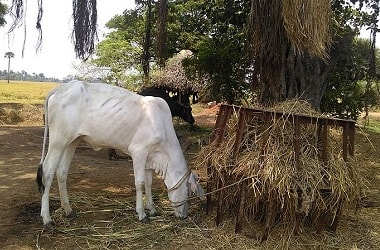
The Ongole breed cow is known for high milk yielding capacities and adaptability in tough conditions.
An innovative cattle breeding technology replicating the In Vitro Fertilisation (IVF) procedure developed by the veterinary scientists at the Livestock Research Station, promising a revolution in cattle breeding.
After successful clinical trials in which the surrogate embryo of the higher genetic Ongole cow is transferred to lower genetic cows under the “Indigenous Bovine Embryo Transfer Mission” at Sri Venkateswara Veterinary University, Livestock Research Station, Lam, Guntur, scientists are now taking the technology to the doorstep of farmers.
The programme has been taken up under the National Mission on Bovine Productivity (NMBP) under the Department of Animal Husbandry Dairying Fisheries, Ministry of Agriculture, and Andhra Pradesh Livestock Development Agency.
The big advantage that a dairy farmer has is there is an increase of offspring by 5-6 times through the bovine embryo transfer technology.
The quality of offspring is also better as the embryo transfer is in between higher genetic animals to lower genetic animals.
Tadikonda MLA and board member of the university Tenali Sravan Kumar launched the programme at the Live stock Research Station, Lam, in the presence of senior officials of the department.
Under the National Mission on Bovine Productivity, it was proposed to carry out 1,000 embryo transfers during October 2-10, 2017, across the country and the Embryo Biotechnology laboratory at Livestock Research Station, Lam, has been identified to carry out this activity in Ongole cattle.